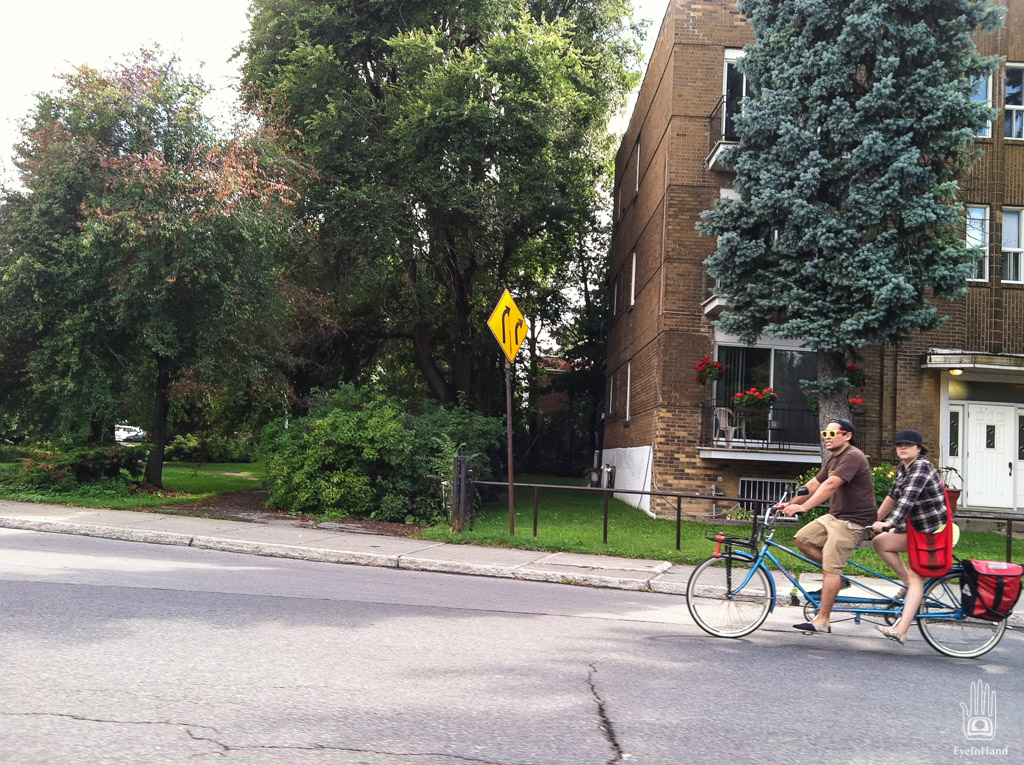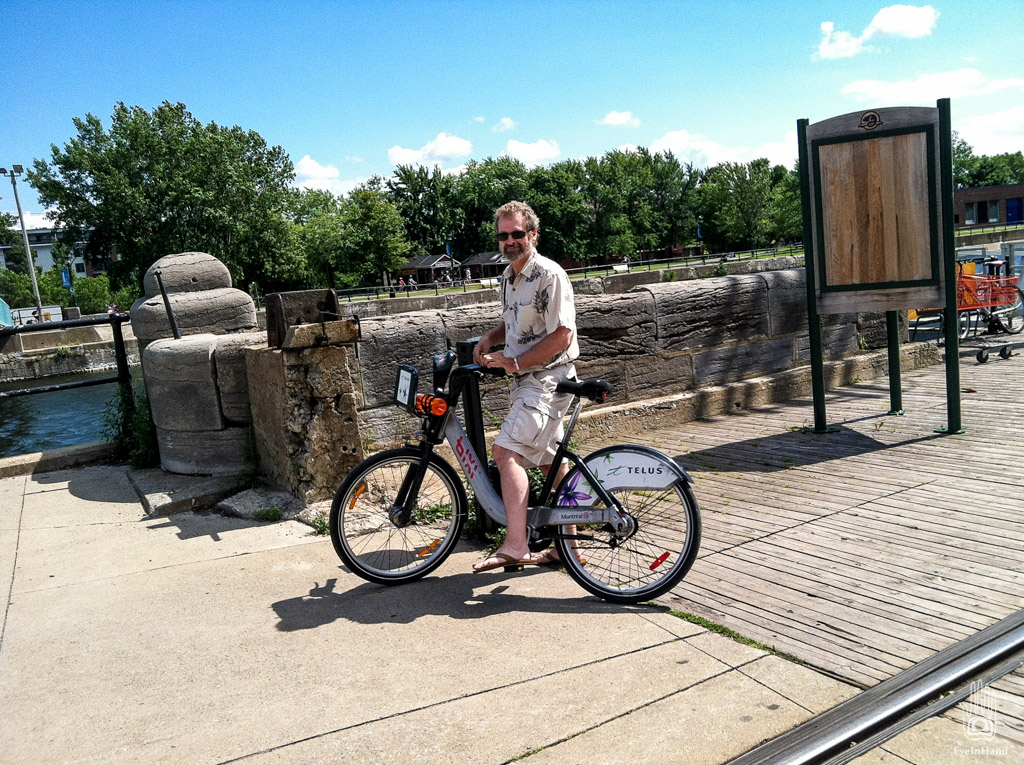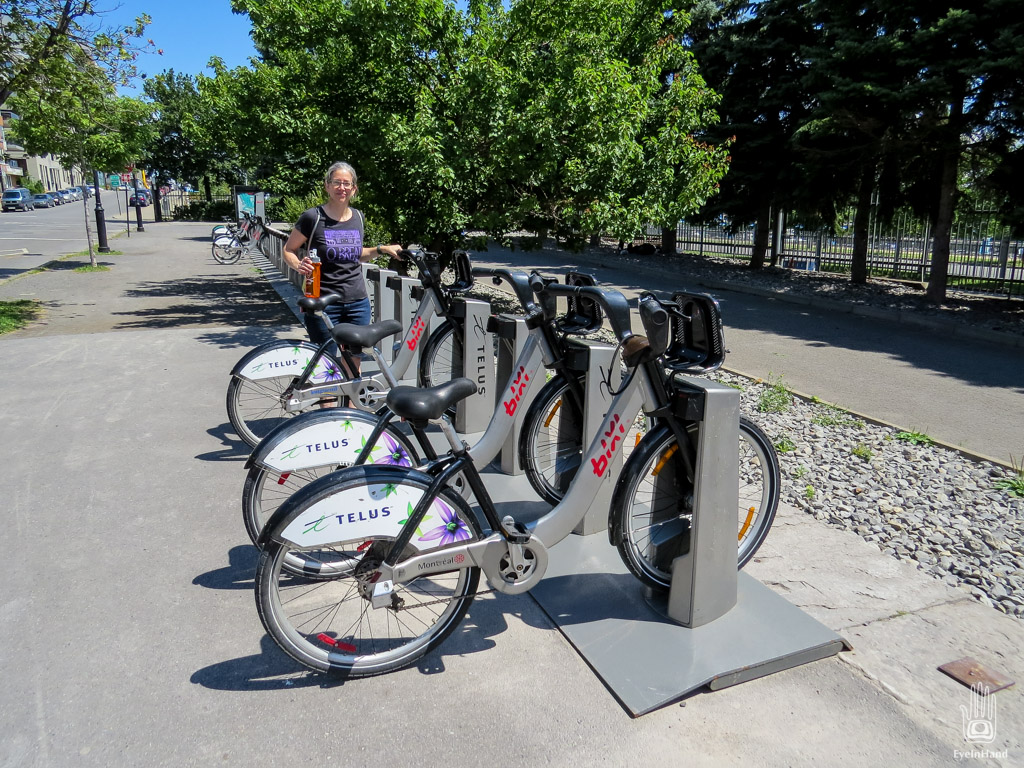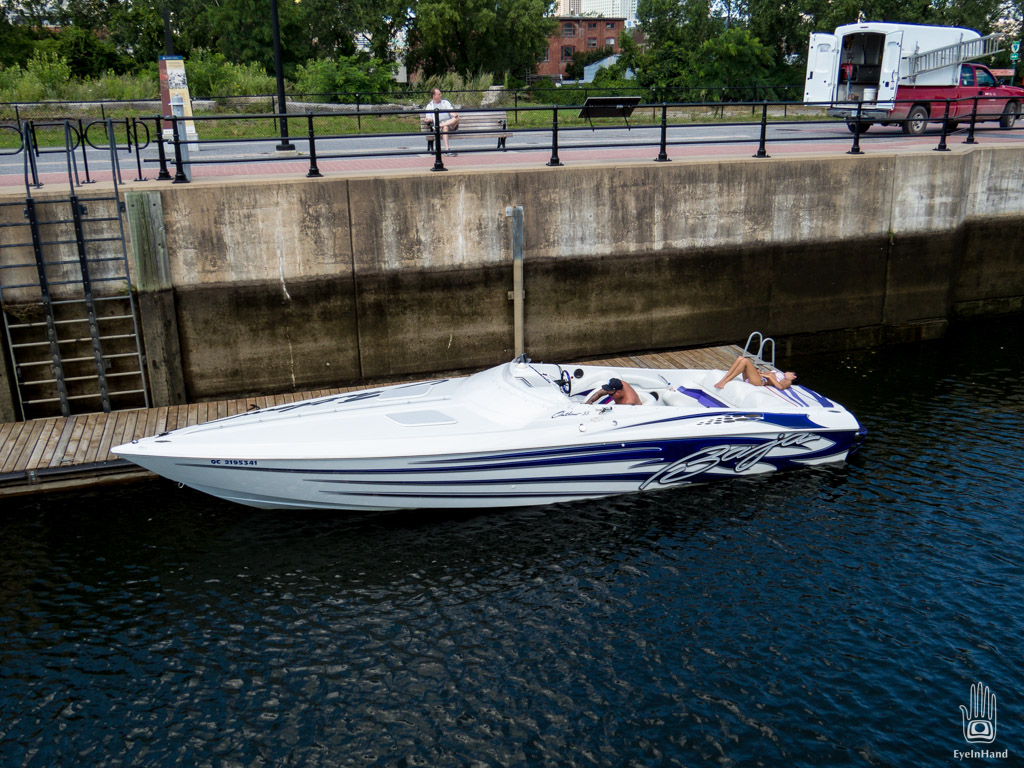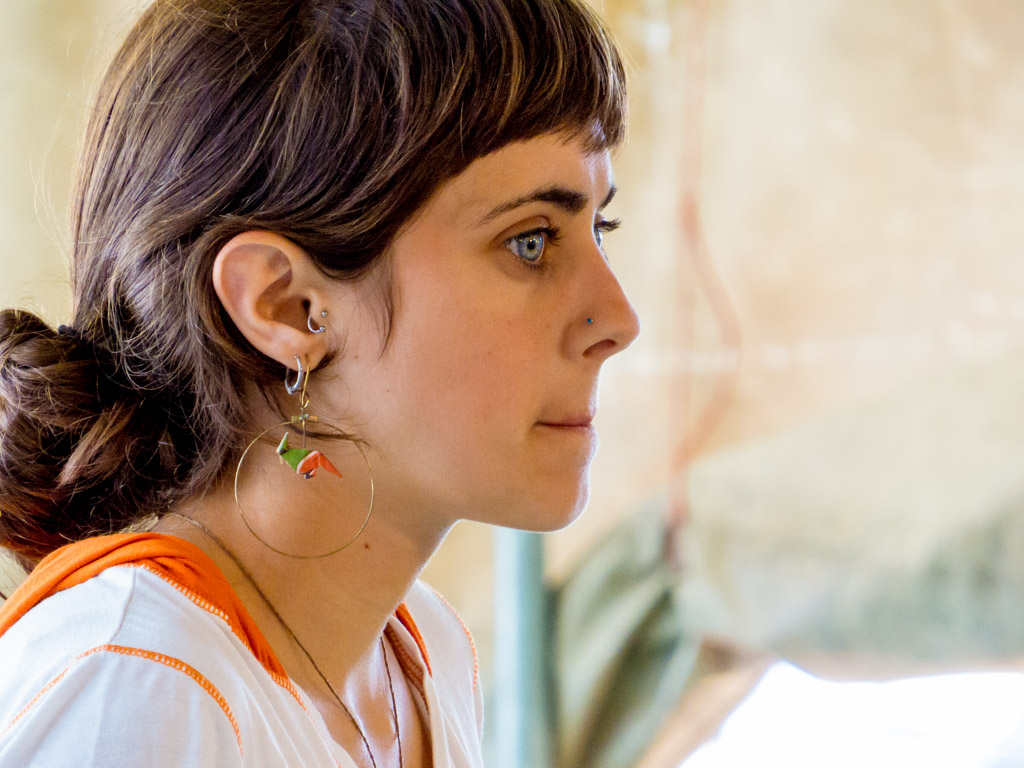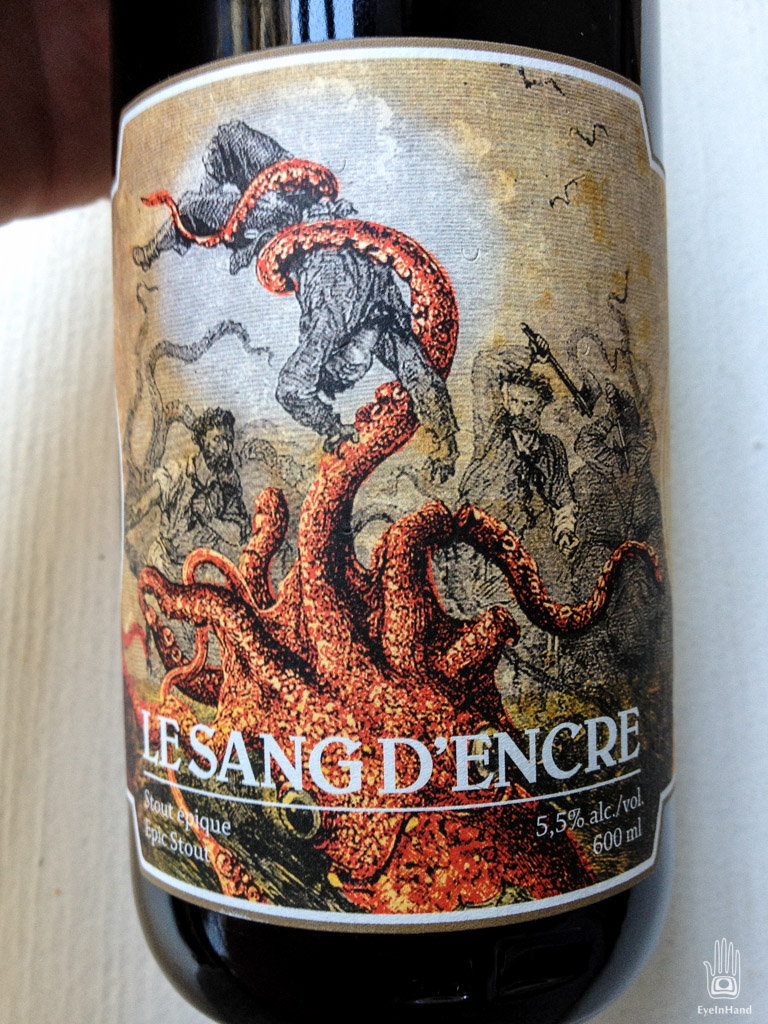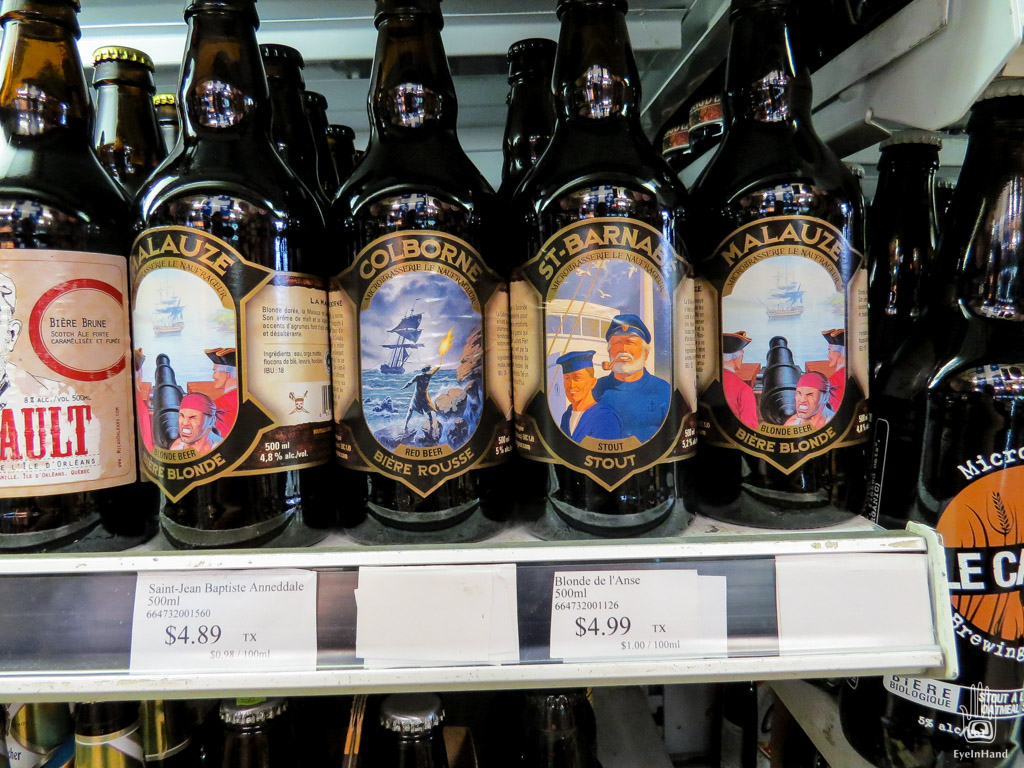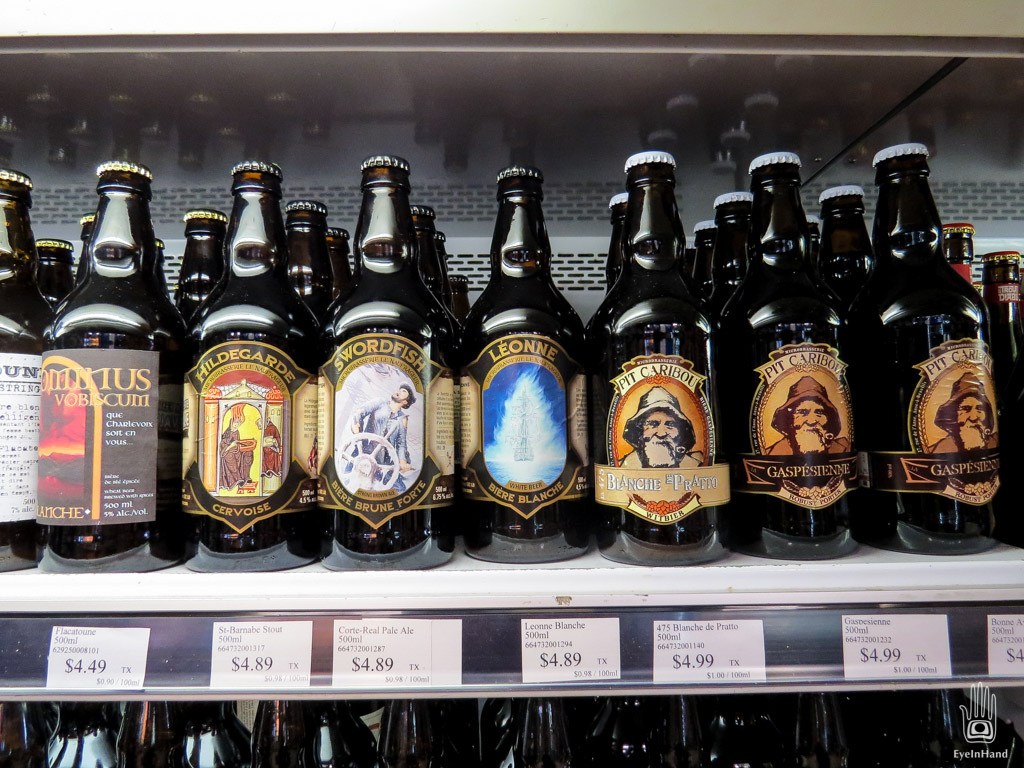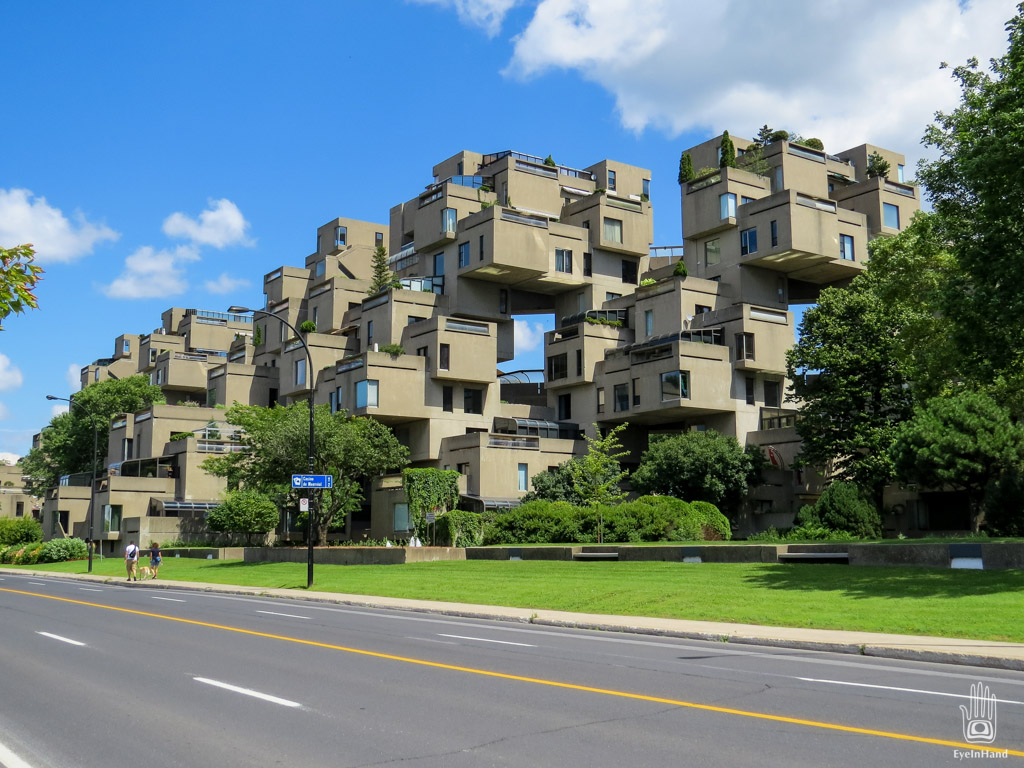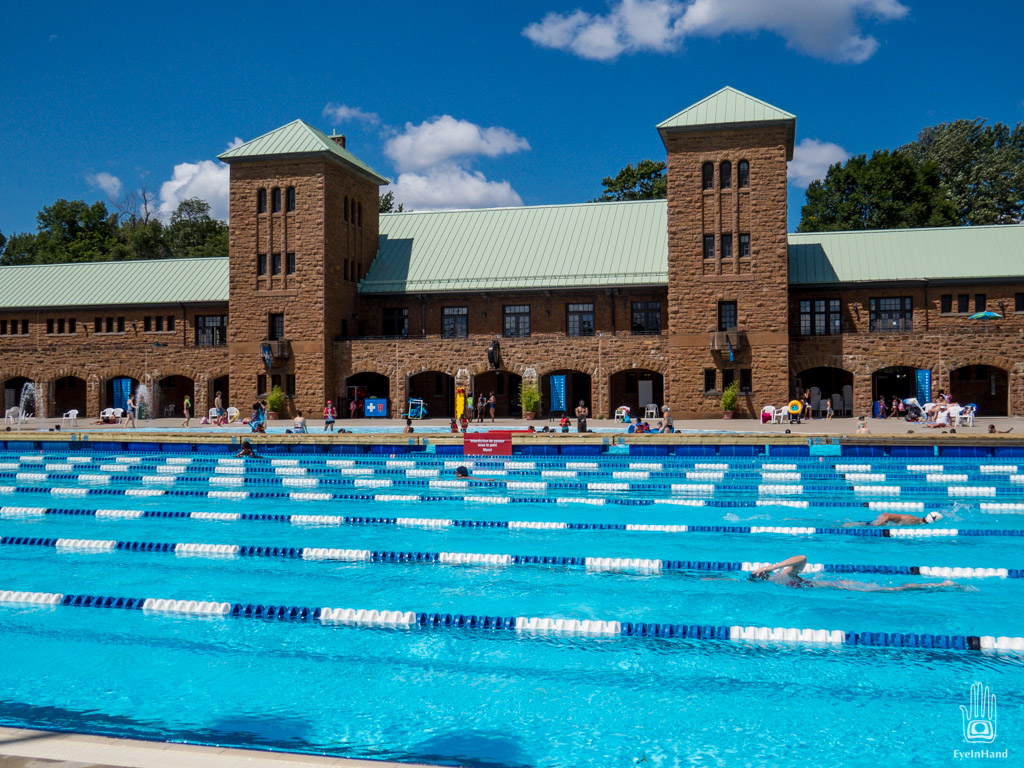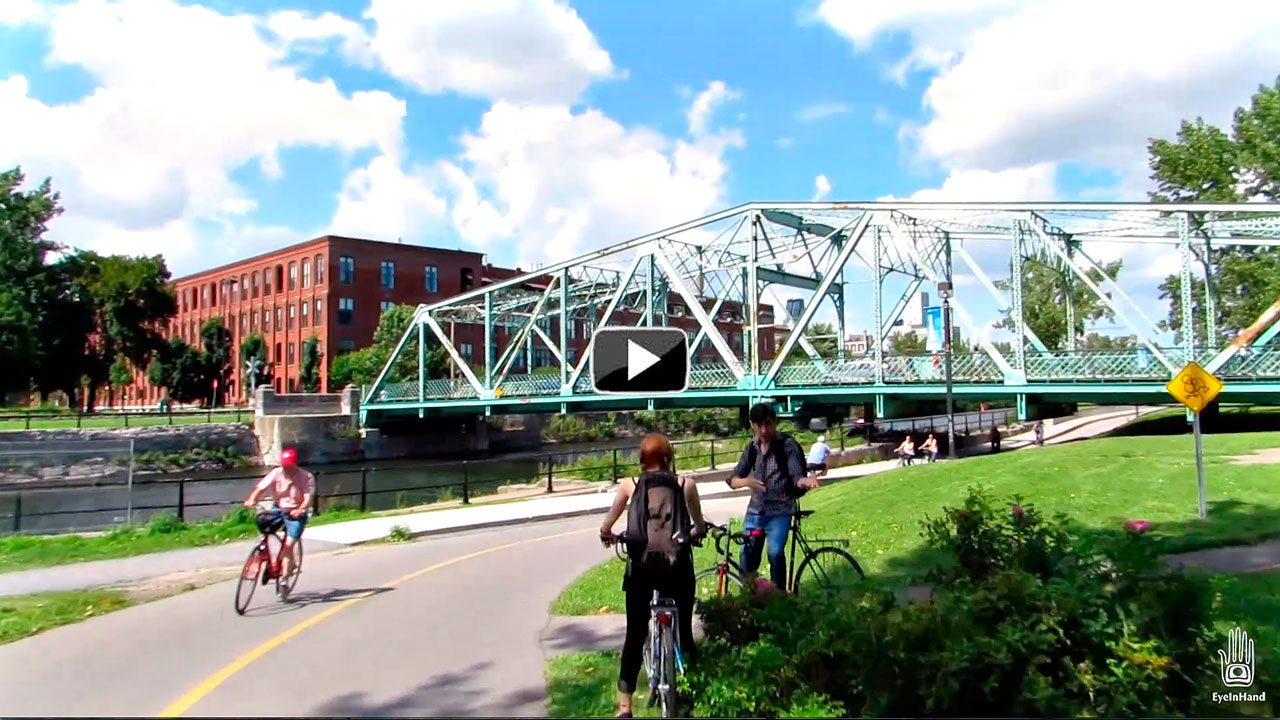pianos and bikes in the park
Montreal was founded hundreds of years before the automobile, and never really got on board with the whole idea. Many streets in the old quarter are still cobblestone and narrow, more suited to carriages and peddler carts. That’s part of the appeal. And like many old cities, they’ve only grudgingly made concessions to cars. Parking is a hassle. Within 8 hours of arriving, we got our first parking ticket. That’s what the nice lady who let us in was trying to say: We had to move the car by morning for the street cleaners, and shuffle from spot to spot like a shell game every few days, or we’d start paying fines. Once we found a safe and free place to leave the car, we did, and didn’t fool with it again for the remaining three days in the city. And, fortunately, didn’t need to. Bicycles were a much better way to get around. Waaaay better.
The city has a really well thought out system of bike sharing called Bixi. Conceived back in 2007 as part of a new transportation plan, Bixi went into effect in 2009 with 3000 bikes and 300 docking stations. For a flat rate of $7 a day for non-residents, you get unlimited 30 minute trips anywhere in the city. Residents can buy an annual pass for a very reasonable $80. That’s unlimited biking without the worry of theft – no locking to light poles or toting it upstairs to the apartment and office day after day. Just ride one, park it outside, and leave it. When you’re ready to go, grab another, then leave that one, too.
a Bixi Bike stand, a new one can be set up in a couple of hours
Stations are self-service and solar powered, with mobile uplinks, so you can get real time information on station locations and bike status, and pay at any kiosk with a credit card. There’s even a mobile app that let’s you do everything through your phone. At $7 a day, it’s cheaper than the cost of just parking a car, even when you DON’T get a ticket.
The system has expanded to a half dozen major cities across the world, but with limited success so far. Bike hostile business interests forming the primary hurdle. There’s a threshold of bike stations and safe bike lanes needed in any area to make such a system viable, and it takes very little resistance to keep that infrastructure below the threshold. Too bad. The system is really awesome, convenient, and has so many ancillary benefits beyond the obvious.
Around the corner from the apartment was a Bixi station, right on the waterfront. From there we could head east along the river and into the city, or west along the canal toward the farmer’s market and the residential areas. Or south across bridges to the islands and the parks on them. On dedicated bike paths the whole way.
the Lachine Canal
We took the canal route the first day. The old Lachine Canal system, which includes a series of locks, was built in the early 1800’s to provide safe transport around some pretty nasty rapids in the St. Lawrence. The canal is still in operation today. We saw a number of boats, large and small, locking in and out each day, and spotted boaters buying drinks at cafes and food from the markets while they waited for the water to rise.
Atwater Market, is at the water
Next to the canal, a few miles upriver, is the amazing Atwater Farmer’s Market. We went there by bike several times for provisions, and just to look around. You can get pretty much anything you’d want there. Fresh baked bread, cheeses, pasta, chocolates, gourmet pizza, fresh seafood and meats, coffees and teas, sausages, pastries, and of course every sort of fresh fruit and vegetable you can imagine. We ate well.
I picked up some great local beers. In keeping with their maritime roots, Montrealers clearly favor seafaring themed brews. Especially those that depict horrible disasters. Freezing to death in the Antarctic. Attacked by giant squid. Devils, shipwrecks, epic battles, it’s all there. And good beer, too.
From the market we headed across the islands to the site of the World Expo in 1967. Much of the infrastructure and architecture is still in use, some was repurposed for the Olympics in ’76, and now are municipal parks, stadiums and public pools.
iconic Expo architecture
Habitat 67
Later we headed inland and uphill to museums and galleries. Surprisingly easy travel by bike, and almost all of it in dedicated bike lanes. We covered over 25 miles one day without breaking a sweat, and I didn’t have to get my nerves jangled driving in city traffic, or circle blocks endlessly prowling for a parking space. A big win on all counts.
There’s some video of riding along the canal. It gives a better idea of how well-used and well-loved the trails and bike system is. Considering how far north the city lies, with long cold winters, it’s pretty amazing.



